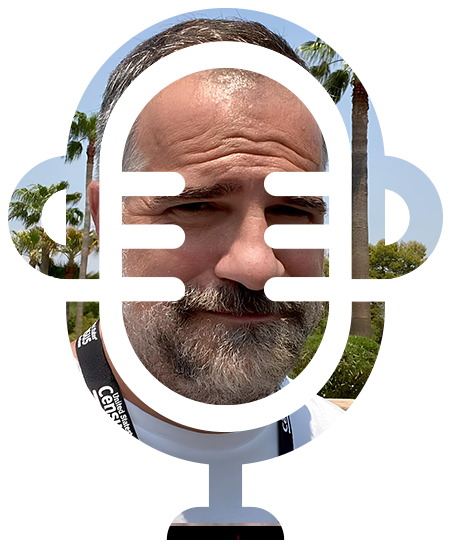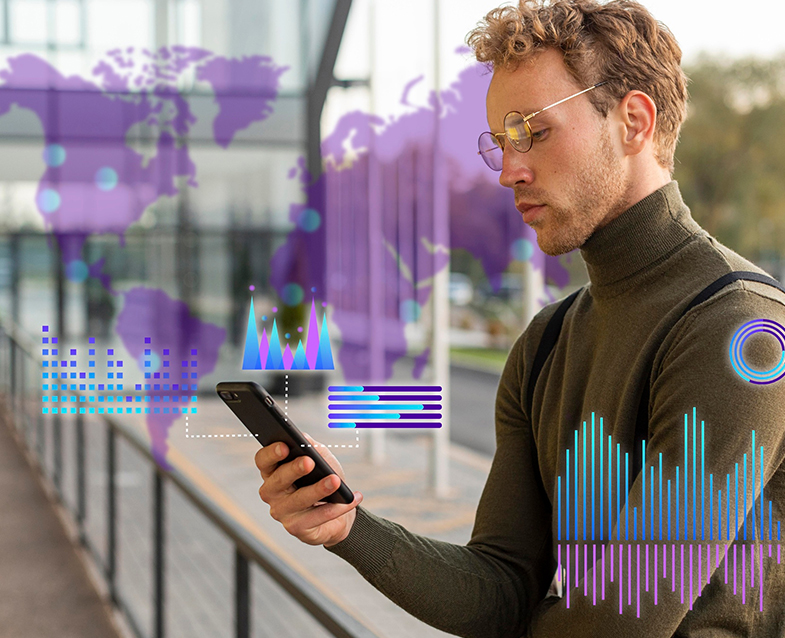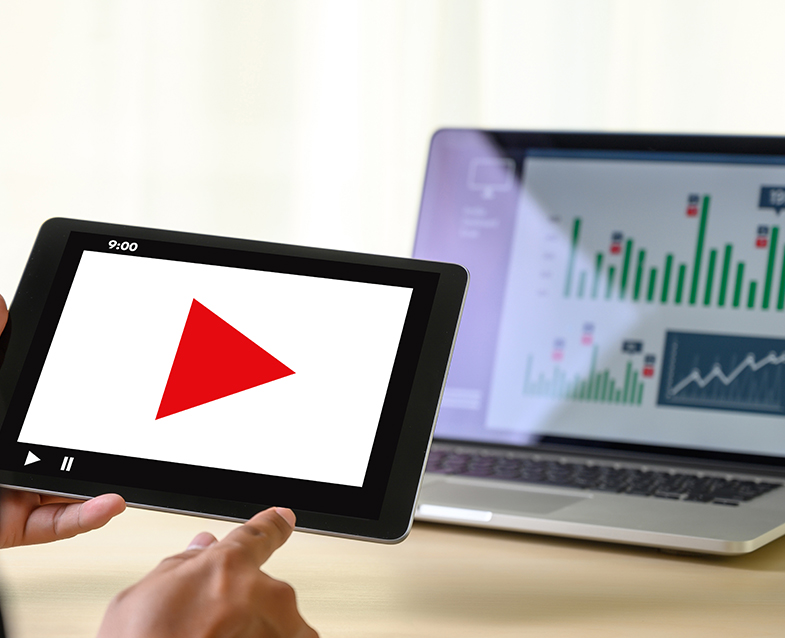Practical Applications of Geofencing in Marketing
Geofencing for business means setting up virtual borders using GPS data marketing. When people cross these borders, businesses can send them targeted advertising or special messages. This location-based marketing helps local businesses talk directly to nearby customers. It can get more people in the door and boost customer engagement.
In geofencing marketing, companies change their ads depending on where customers are at that moment. For example, a coffee shop might send a coupon to someone walking close by in the morning. Neighborhood marketing works better this way because ads reach only the right people. This avoids wasting money on people who aren’t interested.
Geo-targeted advertising fits well with social media, emails, and mobile apps. That way, businesses can run multi-channel marketing that feels natural to customers. People get offers and info tied to places they actually visit. That encourages repeat visits and helps build loyalty.
Using Geofencing for Local Offers, Promotions, and Real-Time Event Updates
Using geofencing for local offers means businesses can send deals straight to phones when shoppers are near. This real-time interaction makes it more likely people will act fast—like stopping by a store or going to an event.
Marketing campaign optimization happens because automated marketing workflows send messages based on where users are without anyone doing it by hand. For example:
- A shop might push flash sale alerts when lots of shoppers show up.
- A restaurant could tell nearby people about today’s specials or happy hours.
- Event planners update guests right away if something changes or a bonus offer appears.
These tricks make customers happier and get better results from every ad sent on SMS, apps, or social media.
Competitor Targeting and Seasonal Storytelling Through Geofenced Advertising
Geofenced advertising lets businesses do competitor targeting by sending ads to folks near rival stores or events. This guerrilla marketing grabs attention just as people think about competitors—and maybe gets them to switch over.
Seasonal storytelling uses hyper-local storytelling inside small areas with geofence triggers during holidays or local events. For example:
- A bakery might share holiday recipes only with shoppers inside Christmas markets.
- A gym could promote New Year’s packages just around its nearby gyms.
These local stories connect better than broad ads because they talk directly to what the community cares about. Timing is key here since GPS data marketing makes sure messages arrive when they matter most.
By mixing competitor targeting with seasonal storytelling through geo-targeted campaigns, marketers get ahead in busy markets—growing business while staying relevant to every customer’s moment.
Extending Hyper-Local Storytelling Across Multiple Platforms
Hyper-local storytelling helps businesses connect with people by focusing on nearby places. Location-based marketing uses geo-targeted advertising to send messages that match specific neighborhoods or local spots. People pay more attention when content feels like it’s about where they live or work.
Local business marketing gets a boost when stories show up on different platforms. Multi-channel marketing mixes location targeting with things like social media, email, and websites. This creates a smooth experience for customers everywhere. For example, a nearby cafe might use geofencing to send deals just to locals. At the same time, it can share posts about neighborhood events on social media.
When businesses put targeted advertising on many platforms, they get seen more and build trust in their community. This approach not only brings people in but also grows loyalty by making connections based on place.
- Focus messages on the local neighborhood.
- Use multiple channels like social media and email.
- Apply geofencing to reach nearby customers.
- Share community stories alongside promotions.
Integrating Geofencing with Social Media, Email Marketing, Website Retargeting, and In-App Engagement
Geofencing works better when it teams up with automated marketing tools. Social media marketing automation helps brands schedule posts that reach people in certain areas at the right times. Bots handle this so marketers don’t have to post manually all day.
Email marketing automation sends emails based on where customers are. For example, someone near a store might get an invite for special deals after visiting once. Automated workflows connect all these steps so campaigns run without much human work.
Website retargeting shows ads depending on a visitor’s location even after they leave a site. In-app engagement sends push notifications that match users’ real-time places for timely offers.
CRM integration pulls all this info together. It tracks customer actions across channels and uses geofencing data to improve future messages. This creates smooth communication that pushes conversions up.
- Schedule geo-targeted posts with social media bots.
- Send location-based emails automatically.
- Retarget website visitors by physical location.
- Use push notifications in apps tied to user whereabouts.
- Connect all data through CRM systems.
Enhancing Customer Engagement with Context-Specific Marketing Narratives
Personalized content makes people feel seen and valued. Marketing personalization changes content depending on who looks at it and where they are. This keeps messages relevant instead of random.
Context-specific stories fit the customer’s current situation or environment. Say a clothing store pushes winter gear ads only in cold places but runs summer sale ads somewhere warm at the same time—all done automatically through location targeting tech.
This kind of customization grabs attention because it matches what customers need right now. It builds stronger bonds that lead to better loyalty and sales over time.
- Use dynamic content based on user location.
- Craft stories that fit customer surroundings.
- Show different offers depending on the region.Let technology automate content changes for relevance.
Podcasting as a Growth Strategy for Businesses
Podcasting is a strong tool in AI marketing and business growth strategies. It lets you connect with your audience in a personal way. You can share stories, tips, and know-how directly with listeners. This kind of sharing builds trust and makes your brand stand out.
Using podcasting saves time thanks to content creation automation. You get to produce regular content without much hassle. Podcasts pull in online lead generation by bringing in people who really care about what you offer. When you add geofencing or other digital targeting, your reach grows where it matters most.
How Podcasting Supports Lead Generation and Brand Awareness
Podcasts work well for marketing lead generation because they keep people interested longer than ads or social posts do. Listeners tend to stick with hosts and brands they like over time. That keeps brand awareness growing without pushing hard sales.
Sales enablement AI tools help by studying what listeners do and like. This info lets you make future episodes or ads that fit better. Audience targeting gets sharper when data from podcasts helps guide other campaigns on email or social media.
Customer engagement is big here, too. Podcasts open ways for listeners to talk back through reviews, comments, or live Q&As. That kind of talk builds stronger ties that can turn into sales.
How podcasting helps business growth:
- Builds real connections that create trust
- Draws in niche groups who care about specific topics
- Brings in qualified leads via helpful content
- Boosts brand recall with steady exposure
- Works well with AI tools that help sales
Best Practices for Creating and Promoting Business Podcasts
Good podcast marketing starts with planning from making episodes to sharing them:
- Content Optimization: Make each episode focus on clear topics your audience wants. Use SEO-friendly titles and descriptions with words like “podcasting for growth” or “marketing lead generation.” Adding transcripts helps more people find your show.
- Consistent Publishing Schedule: Put out episodes often—weekly or every two weeks is best to keep listeners hooked.
- Leverage Social Media Scheduling Bots: Use bots to automatically share new episodes on places like LinkedIn, Twitter, Facebook, or Instagram. This saves time and keeps promos on point.
- Use Multi-platform AI Tools: Try AI software that turns audio into blogs, videos, newsletters, or social clips fast. This spreads your message farther.
- Engage Your Audience: Ask listeners in episodes to subscribe, review the show, or visit your site for extras.
- Cross-Promote Collaborations: Bring in guests who know their stuff; their followers might join your audience too.
Following these tips makes your podcast work hard as part of a business plan focused on brand awareness and smart online lead generation.
Leveraging Artificial Intelligence to Enhance Marketing Efforts
Artificial intelligence (AI) is changing how marketing works. AI marketing uses smart tools to dig into data, automate tasks, and make customer experiences more personal. Companies that use AI tools for business get faster at making decisions and reach the right audience better.
In sales, AI finds leads that are more likely to buy by looking at past talks and behavior. AI in sales helps close deals quicker and cuts down on manual work. Marketing automation with AI handles repetitive jobs like sending emails, posting on social media, and running ads. This saves time for planning smarter moves.
Conversational AI makes talking with customers easier through chatbots that answer anytime. These bots also collect info about what buyers like. Digital transformation in marketing leans on AI productivity tools plus marketing data analytics to check how campaigns do.
When businesses use these technologies together, they send messages at just the right moment based on things like location or browsing habits. This makes geofencing for business work way better when it teams up with AI-powered marketing.
Why use AI in marketing?
- Analyzes tons of data quickly
- Automates boring, repeat tasks
- Personalizes messages for each customer
- Improves lead targeting in sales
- Tracks campaign success with real-time data
The Role of Prompt Engineering in Effective AI Usage
Prompt engineering means writing clear instructions so an AI gives you the right answers. A perfect prompt has enough details and context to get exactly what you want.
To improve a prompt, you tweak words bit by bit until the output fits your goal. The coolest prompt is one that feels like it knows what you want before you finish asking. For example, instead of “write a social media post,” try: “Create a friendly Instagram caption promoting our new product launch aimed at young professionals.”
Good prompt engineering helps conversational AI work better because it cuts down on guessing and speeds up making content or solving problems.
Tips for better prompts:
- Be clear about what you want
- Add background info if needed
- Ask follow-up questions in one prompt
- Talk naturally, like to an expert assistant
This way, any AI tool can give you steady and useful results for your marketing work.
AI Agents as Automated Assistants for Sales Coaching and Marketing Tasks
AI agents act like employee-like helpers who handle complex tasks automatically without needing much human help. In sales coaching, automated sales coaching agents listen to calls between reps and prospects using speech recognition plus methods like Sandler’s system.
These agents check every call daily to find missed chances or talk problems. Then they send custom feedback straight to each salesperson by email or message. This kind of coaching is faster than normal training because it happens right after every call.
Besides coaching, other agents schedule posts on different platforms or pull reports from big data sets fast—saving hours of manual effort.
Using these agents helps companies grow smoothly while keeping control over teams and messages—a big help during digital transformation efforts aiming at growth through tech.
For marketers ready to boost efficiency using solutions like conversational AI or automated sales coaching powered by intelligent agents, knowing how prompt engineering shapes results will get more from digital transformation plans today.
Combining Geofencing, Podcasting, and AI for Cross-Platform Marketing Success
Mixing geofencing for business with podcasting and AI marketing can create a strong multi-channel approach. Geofencing lets businesses target people based on their location. This helps send messages that catch attention at the right time. Podcasting for growth adds trust by sharing useful info straight to listeners.
AI tools then jump in to analyze data from all these places. They help improve campaigns on the fly. Cross-platform AI tools make it easy to sync messages across geofenced ads, podcasts, social media, and email. This kind of digital transformation in marketing builds systems that grow with customer needs.
Here’s an example: a restaurant sets up geofencing to send deals when folks get near. At the same time, they use podcasts about food or local events to build a loyal audience. AI tracks how people react and tweaks the ads automatically.
This mix raises brand awareness and gets results by reaching customers wherever they are—online or offline—with messages that fit what they like.
Improving Sales Close Rates with AI-Driven Coaching Based on Sales Systems
AI-powered sales coaching changes how companies raise sales close rates. The AI studies recorded sales talks using systems like the Sandler sales system. It spots what went well and what needs work in real time.
These automated helpers listen to daily calls and send personalized tips by email or dashboard updates. They show what worked in each chat and suggest fixes based on proven sales methods. This keeps training going all the time without waiting for bosses to review.
For example, if a salesperson forgets key questions during a call, the AI points it out fast. Then it gives advice that fits that person’s style.
This tech speeds up skill building and pushes close rates higher because feedback comes quick, clear, and useful. Companies using this see more steady results from their teams and better revenue.
Applying Guerrilla Marketing Principles Within Niche Markets Using Integrated Technologies
Guerrilla marketing works best in rich niches where small efforts bring big results at low cost. When you mix guerrilla ideas with integrated technologies like geofencing and AI, you get even better effects. It helps solve niche problems smarter than broad campaigns do.
Focusing on special markets like restaurants or healthcare lets marketers make messages that hit just right. They can use location info plus AI insights about customer behavior. This means less money wasted and more relevant offers.
For instance:
- A chiropractor might use geofencing around gyms and follow up with emails made by an AI helper.
- Orthodontists could sponsor podcasts about family health while running retargeted ads near schools.
By blending surprise moves from guerrilla tactics with automation tools working together across channels, businesses find growth chances inside competitive niches—even without big budgets.
Putting geofencing for business growth together with podcasting for audience connection—and adding cross-platform AI tools—fits today’s digital world well. These approaches build marketing systems that grow fast but still feel personal for your niche market needs.
FAQs
What role do marketing agencies play in AI marketing and geofencing?
Marketing agencies design and manage AI-driven campaigns using geofencing to target local audiences. They help businesses optimize multi-channel marketing for growth.
How can sales coaching with AI improve sales performance?
AI analyzes sales conversations and scripts to provide personalized coaching. It highlights strengths and areas to improve, boosting sales close rates efficiently.
Which marketing niches benefit most from podcasting for growth?
Niches like healthcare, local services, and tech gain from podcasting. Podcasts build trust and attract qualified leads through specialized content.
What is social media marketing automation’s impact on campaign success?
Automation schedules geo-targeted posts and retargets users automatically. It ensures timely, relevant messages without manual effort.
How do AI agents enhance sales scripts analysis and improvement?
AI agents listen to calls, analyze scripts, and offer immediate feedback. This leads to clearer messaging and better customer engagement.
Why is marketing personalization critical in cross-platform strategies?
Personalization adapts messages based on customer data. It increases relevance and engagement across email, social media, and ads.
How do social media scheduling bots support podcast promotion?
Bots share new episodes instantly on multiple platforms. They maintain a consistent presence to grow the podcast audience.
What benefits does automated email coaching provide for sales teams?
Automated emails deliver timely tips after calls. This continuous feedback helps reps refine skills quickly.
How does the Sandler sales system integrate with AI-powered coaching?
AI tools use Sandler principles to evaluate calls and coach reps in real time. This raises sales performance with proven methods.
Essential Marketing Tools & Techniques for Growth
- Use AI-powered analytics to track campaign ROI metrics precisely.
- Implement chatbot integration for instant customer interaction.
- Apply SEO techniques including voice search optimization to boost online visibility.
- Build scalable systems that streamline the entire customer journey.
- Leverage marketing funnels to convert leads effectively at every stage.
- Employ digital sales strategies combined with real-time marketing for quick wins.
- Use AI learning models to predict trends and optimize future campaigns.
- Develop content strategies utilizing AI-generated content and podcast transcripts.
- Incorporate conversation with AI tools for continuous learning and insightful output.
- Use automatic feedback systems for ongoing marketing performance improvement.
- Reassess marketing spend regularly using data from AI-powered marketing assistants.
- Focus on word of mouth leads by enhancing customer retention through personalized communication.
- Engage business decision makers with entrepreneur marketing insights via online marketing education platforms like YouTube learning.








